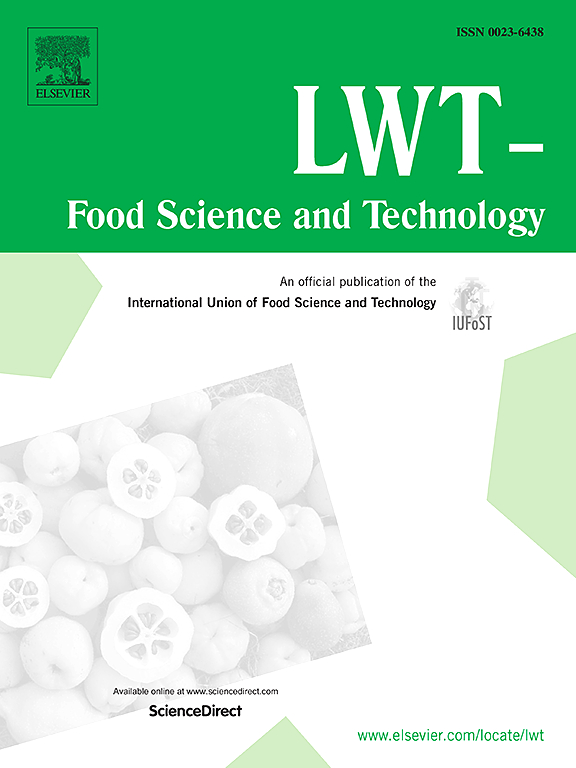Analysis of energy response of anthocyanin in berry puree under microwave heating
IF 6
1区 农林科学
Q1 FOOD SCIENCE & TECHNOLOGY
引用次数: 0
Abstract
To elucidate the anthocyanin stability in berry puree undergoing dehydration processing through microwave heating, the energy response properties of anthocyanins were investigated through the difference of activation energy and dielectric properties between anthocyanin and water molecules. The results exhibited greater molecular weights and stronger hydrogen bonding interactions of anthocyanins molecule delayed its dielectric polarization under microwave. However, the anthocyanin demonstrated greater sensitivity to microwave energy compared to other macromolecules such as fructose, glucose, and pectin in berry puree. The release and degradation of anthocyanins have positive correlation with moisture content and temperature, respectively. Microwave promotes anthocyanin release at a relatively lower temperature through breaking the intermolecular and intramolecular interactions of components due to the lower microwave intensity or the shorter exposure duration causing less structural plasmolysis. For the microwave heating berry puree, the energy response difference in activation energy of water evaporation lower than that of anthocyanin degradation, resulting the selective energy absorption of polar molecules. The higher activation energy required for anthocyanin degradation enhanced greater stability, allowing continued anthocyanins release up to 80.00 °C under microwave heating. This study provided a guidance for the optimal technology of microwave energy input for the berry processing to enhance the retention of heat-sensitive components.
微波加热下浆果果浆中花青素的能量响应分析
为了阐明微波加热脱水莓果泥中花青素的稳定性,通过花青素与水分子之间的活化能和介电性质的差异,研究了花青素的能量响应特性。结果表明,花青素分子在微波作用下具有较大的分子量和较强的氢键相互作用,延迟了其介电极化。然而,与浆果泥中的其他大分子如果糖、葡萄糖和果胶相比,花青素对微波能量表现出更大的敏感性。花青素的释放和降解分别与水分含量和温度呈正相关。微波通过打破组分的分子间和分子内相互作用,在相对较低的温度下促进花青素的释放,因为微波强度较低或暴露时间较短,导致较少的结构质解。对于微波加热的莓果泥,水蒸发的活化能差低于花青素降解的活化能差,导致极性分子选择性吸收能量。花青素降解所需的较高活化能增强了更大的稳定性,允许在微波加热下持续释放花青素至80.00°C。该研究为微波能量输入工艺的优化提供了指导,以提高热敏感成分的保存率。
本文章由计算机程序翻译,如有差异,请以英文原文为准。
求助全文
约1分钟内获得全文
求助全文
来源期刊

LWT - Food Science and Technology
工程技术-食品科技
CiteScore
11.80
自引率
6.70%
发文量
1724
审稿时长
65 days
期刊介绍:
LWT - Food Science and Technology is an international journal that publishes innovative papers in the fields of food chemistry, biochemistry, microbiology, technology and nutrition. The work described should be innovative either in the approach or in the methods used. The significance of the results either for the science community or for the food industry must also be specified. Contributions written in English are welcomed in the form of review articles, short reviews, research papers, and research notes. Papers featuring animal trials and cell cultures are outside the scope of the journal and will not be considered for publication.
 求助内容:
求助内容: 应助结果提醒方式:
应助结果提醒方式:


